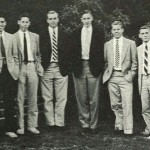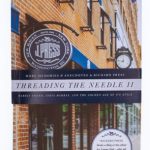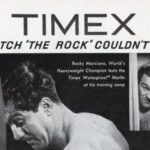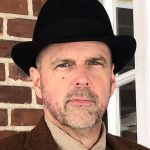It seems like only yesterday we hoisted our leather botas at the 1959 running of the bulls in Pamplona. It still goes on every July 6th, maiming an occasional drunk, catching a celebrity moment, and every couple of years there’s a fatality.
My best friend and Loomis prep-school roommate Gene Mercy and I celebrated our Lehigh and Dartmouth graduations on the cheap for a razzmatazz heyday on the continent when Europe cost barely five dollars a day. After hitting the roulette tables in the vintage casino of a faded Biarritz resort, we headed across the border to find out if the sun still rose in Spain the way it did for Ernest Hemingway in the Roaring Twenties. Leaving our battered Simca rental car in a designated lot outside town, for a couple of pesetas per night we garnered a feral dormitory room with a puke-and-dystentary, stand-up water closet down the hall.
Adios to seersucker. We garbed at the local mercado with a white cotton pullover collared shirt and bolero pants of the same material tied at the waist by a bright red cravat we turned into a belt secured under three inch wide belt loops at the sides and back. A rancid kitchen towel plus ashtray remains lent the formerly snow white outfit an artfully peasant chic. A signature pañuelo (neck scarf) knotted as an ascot across our open shirt collar and a fire engine red Basque beret completed the masquerade. We were fit as a fiddle and ready for action.
The festival started the day before we arrived. It was 1924 again. The town belonged to Hemingway. Here’s his take via his fictional lead Jake Barnes:
The fiesta was really started. It kept up day and night for seven days. The dancing kept up, the noise went on. The things that happened could only have happened during a fiesta. Everything became quite unreal finally and it seemed as though nothing could have any consequences. It seemed out of place to think of consequences during the fiesta. All during the fiesta had the feeling even when it was quiet, that you had to shout any remark to make it heard. It was the same feeling about any action. It was a fiesta and it went on for seven days.
We thought the place would be overnun by Babbitt American tourists and fellow collegians, but we were the only virgins in the whorehouse. Hemingway was back in his old Room 217 at the Hotel La Perla Hotel in the northeast corner of the Plaza del Castillo. He came with a large party from Madrid: the bullfighter Antonio Ordonez, Dr. Vernon Lord, TV writer Aaròn Hotchner, Irish journalist Valerie Danby-Smith, and the photographer Julio Obina for Life Magazine. In 1959 Hemingway was corpulent, bearded, and drank at the teeming boisterous Bar Txoko on the plaza across from his hotel.
All the Hemingway action was at the Txoko. Hemingway with wife Mary always by his side was seated at their roisterous table on the plaza. Among the group was humorist Art Buchwald, who wrote for The Washington Post. Debonair Melvin Douglas, a suave actor and leading man on stage and screen, was next to Buchwald. I had an inside track to both — the chutzpah of J. Press entitlement. Buchwald was an occasional customer and had chatted with my uncle, Irving Press, at the New York store. Melvin Douglas was already cast for the leading role in Gore Vidal’s play “The Best Man,” slated for a Broadway opening months ahead, with J. Press tailoring his stage wardrobe.
They bought our act and took us to the throne. Hemingway broke up at our boozed up arrogance. He told us to call him “Papa,” gregariously toasting “the table’s new college mascots.” Three sheets to the wind, biding our time, always looking for ass before serving Uncle Sam. Papa Hemingway filled the bowl with plenty more toasts:
This wine is too good for toast-drinking, my dear. You don’t want to mix emotions up with a wine like that. You lose the taste.
Yesterday the New York Times reported that a new edition of “The Sun Also Rises” will appear for the first time containing Hemingway’s own account of the festival. A discarded first chapter, along with other deletions, earlier drafts, and alternate titles, is included in a new edition which Scribner will release later this month.
Six degrees of separation once again. Gertrude Stein told Hemingway he was part of a lost generation. How about all of us kids who wore gray flannel suits? — RICHARD PRESS











Way to go, Dick! Thanks for the story.
Hemingway’s wristwatches:
http://gallery.photo.net/photo/2247333-md.jpg
What a wonderful story, and what an incredible experience for a young Richard Press. Having recently read that “A Farewell to Arms” was one of only a couple of books that Philip Roth regularly rereads, I took my old Penguin edition away on holiday with me. I think it could become a holiday ritual. Hemingway and Roth, two literary giants I’ll never tire of reading.
@Richard- Is the photo above the photo you mentioned previously that you wanted to locate that featured your classmate?
If the classmate is the guy at top right, I think he’s currently the creative director at Sterling Cooper Draper Pryce in NYC.
Nope.
Great stuff. Thank you.
What a great vignette from Mr. Press’ from memorable college graduation summer. Wearing grey flannel suits in Pamplona. Now that’s different!
In that summer of 55 years ago Hemingway was one the most famous and highest paid – perhaps rhe most famous and highest paid – writers in the world. Per Wikipedia: “In the summer of 1959 he visited Spain to research a series of bullfighting articles commissioned by Life magazine returning to Cuba in January 1960 to work on the manuscript.” The magazine article grew into a full length book, The Dangerous Summer.
Four days short of two years after Mr. Press took this photograph Hemingway, age 61, used his favorite shotgun to kill himself at his home near Sun Valley, Idaho.
Excellent piece! Hope you will continue to share such great stories and memories.
I was there in ’61. I didn’t actually run… Not a difficult decision for me.
We managed to get a room at a local policeman’s home. All the hotels
were full. It was something of a prelude to Woodstock which I attended
8 years later.
Has anybody ever bought a J Peterman Hemingway Fishing Hat? Dark tobacco colored thick leather extra long bill with tan cotton. The thing sounds great.
Whenever I ski out west, I carry a wine skin filled with moderately priced red wine. My wife looks askance at the practice now, believing, correctly, that it is a practice from my wilder bachelor days. I have found a bit of Dutch Courage helpful when negotiating some of the black diamond slopes at Winter Park and Steamboat. I blame Hemingway for this practice after my first reading of The Sun Also Rises.
My first sailboat was named Duff after Lady Brett Ashley. What a nerd I must be.
Will
Among the myriad of contributions, Ivy-Style.com has served to remind us of a abiding connection between Ivy style and, broadly and clumsily speaking, bohemianism (in its many incarnations). Christian’s historical analysis reveals roots in the campus, and, further, back, English dress for country and sport (and probably pub hopping). We might even go so far as to reflect that its connection with staid suburbanism was a short-lived accident. It’s easy to imagine artists, nonconformists, and free spirits moving back-and-forth between shabbiness and Ivy style. Far easier than imagining Joe Middle Management, or even a Stamford, CT-based money manager, choosing the look. It’s easy to understand why flannel, tweed, and heathered worsteds could easily find a home among poets, professors, and pen-wielding bull runners. “Radical Conformists” is a misnomer. Radical NonConformists, especially in the modern-day context.
A great writer covered by a great writer.